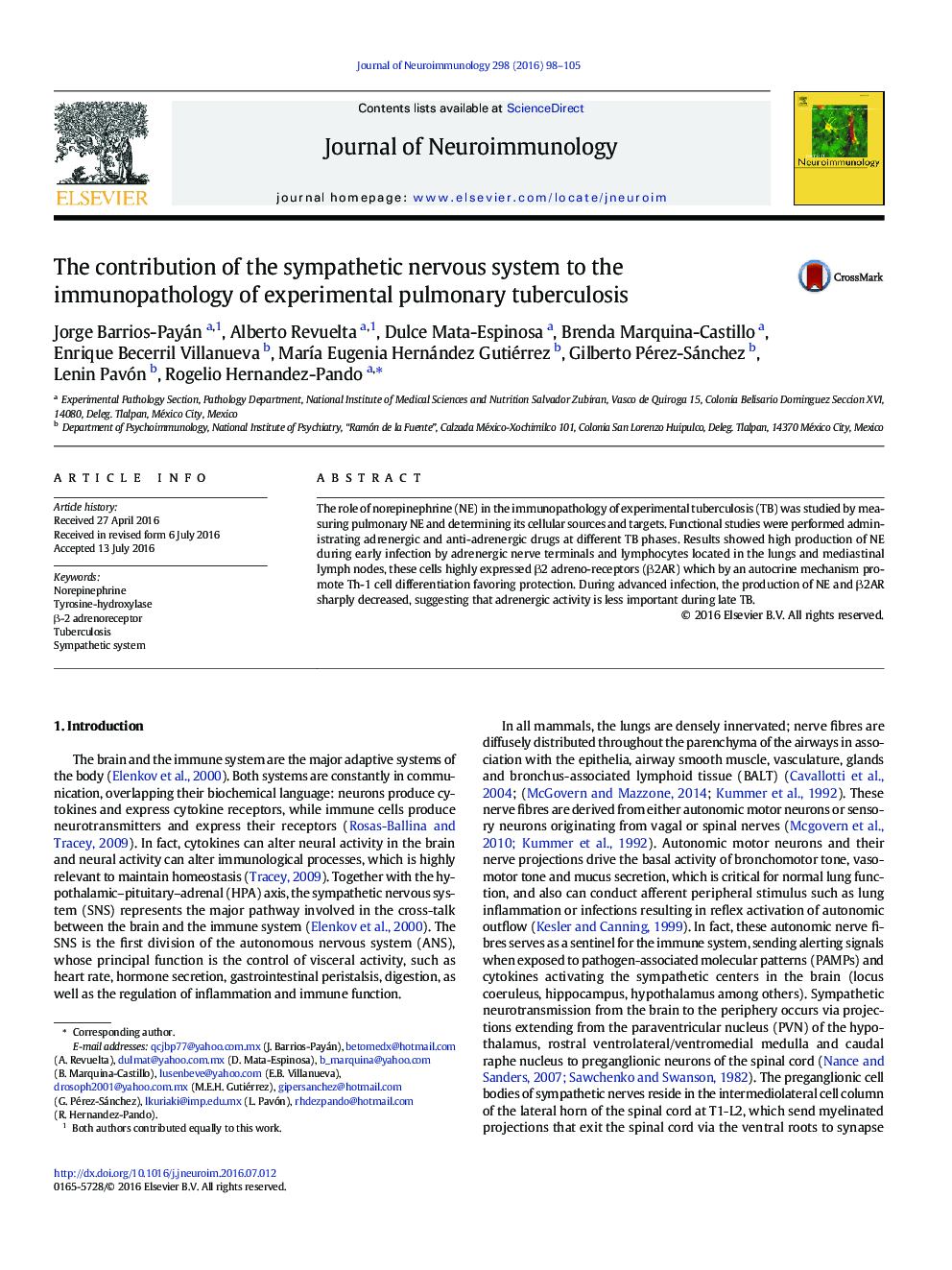| Article ID | Journal | Published Year | Pages | File Type |
|---|---|---|---|---|
| 3063816 | Journal of Neuroimmunology | 2016 | 8 Pages |
•There is high production of norepinephrine during early tuberculosis (TB) infection.•In early TB, lymphocytes produced norepinephrine and expressed β2 adrenoreceptors.•Norepinephrine contributes to Th-1 cells differentiation favoring protection.•During late TB, the production of NE and β2 adrenoreceptors sharply decreased.•It seems that adrenergic activity is less important during late TB.
The role of norepinephrine (NE) in the immunopathology of experimental tuberculosis (TB) was studied by measuring pulmonary NE and determining its cellular sources and targets. Functional studies were performed administrating adrenergic and anti-adrenergic drugs at different TB phases. Results showed high production of NE during early infection by adrenergic nerve terminals and lymphocytes located in the lungs and mediastinal lymph nodes, these cells highly expressed β2 adreno-receptors (β2AR) which by an autocrine mechanism promote Th-1 cell differentiation favoring protection. During advanced infection, the production of NE and β2AR sharply decreased, suggesting that adrenergic activity is less important during late TB.
Graphical abstractDuring early infection, mycobacteria are phagocytosed by alveolar macrophages inducing their activation and highly production of pro-inflammatory cytokines, such as TNFα and IL-1β, that spillover to circulation activating directly neurons located in the limbic system, or initiate afferent nerve stimulus after binding specific receptors located in the nerve endings of the vagus nerve and sensorial peripheral nerves. This stimulus activate the sympathetic nervous system (SNS) at central level producing a high efferent nerve output that regulates the immune response after the release of norepinephrine (NE) from the sympathetic nerve terminals near to the bronchus-associated lymphoid tissue and in regional lymph nodes, which are highly innervated and where sympathetic nerve terminals are in close proximity to immune cells. The release of sympathetic neurotransmitters, especially NE, which is its major neurotransmitter, binds to specific beta-2 receptors on the surface of naïve TH-0 cells inducing their differentiation to Th-1 cells. Interestingly, Th-1 lymphocytes cells have an autocrine response to NE, because they are able to synthesize NE and express beta-2 adrenoreceptor favoring their own activation that contribute to protection, while during late infection NE production and β2AR expression sharply decreased suggesting that during advanced disease the SNS activity is less important.Figure optionsDownload full-size imageDownload high-quality image (85 K)Download as PowerPoint slide
